The Art of Healing: Beautiful Strategies for Dealing with Back Pain
A Guide to Easing Back Pain
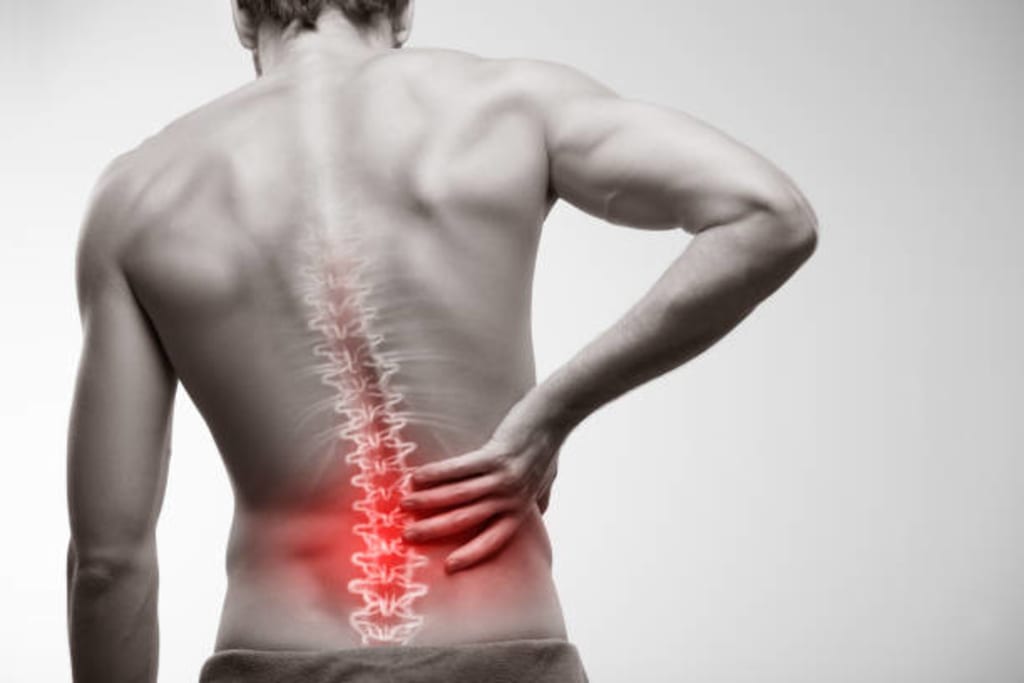
The Art of Healing: Beautiful Strategies for Dealing with Back Pain
Introduction:
Back pain is a common issue that affects millions of people around the world. It can be caused by a variety of factors, including poor posture, muscle strains, injuries and underlying health conditions. Whatever the cause, back pain can significantly impact quality of life and make everyday activities difficult.
Fortunately, there are many ways to manage with the right treatment and self-care techniques to alleviate back pain. These methods can range from simple self-care techniques to more involved medical treatments.
In this article, we will explore the art of healing and provide you with a guide to easing back pain.
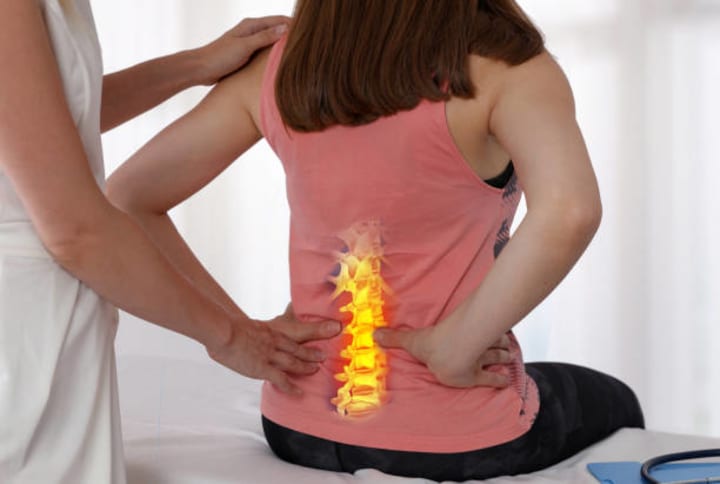
Identify Root Cause:
The first step in easing back pain is to understand its root cause. This can often be determined through a physical examination and diagnostic tests, such as x-rays or MRI scans. Once the cause of your back pain has been identified, your healthcare provider can recommend the most effective treatment plan.
Beautiful Strategies for Dealing with Back Pain:
Treatment options for back pain may include medications, physical therapy, chiropractic care, and surgery, depending on the severity of the issue. In some cases, simple self-care techniques can be effective in reducing back pain. These may include:
Self-Care Techniques:
Self-care is an essential part of managing back pain. There are many simple things you can do at home to help ease your pain. These include:
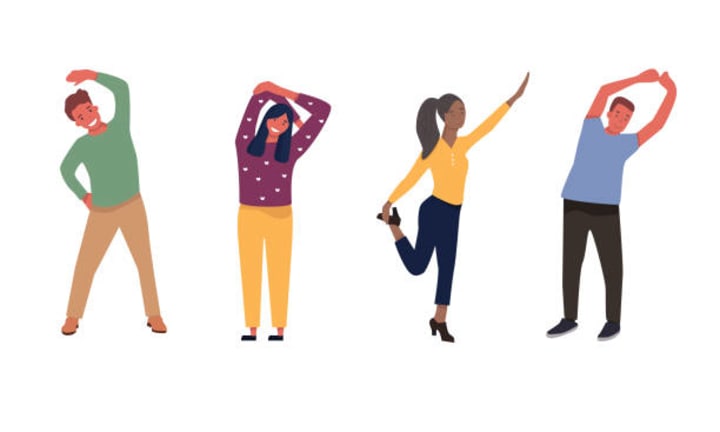
Stretching and Strengthening Exercises: Engaging in regular exercise can help to strengthen the muscles in your back and improve your overall health. Stretching can also help to reduce muscle tension and improve your range of motion. However, it's important to start slowly and listen to your body. Start and try simple stretches, like reaching for the sky or touching your toes, or look up specific stretches for your back muscles. If an exercise is causing more pain, stop and try something else.
There are many stretching and strengthening exercises that can help to alleviate back pain and improve overall function. These exercises can be done at home or with the guidance of a physical therapist.

Here are a few examples:
- Cat-Cow: Start on your hands and knees with a flat back. Inhale and round your spine, tucking your chin towards your chest (cat). Exhale and arch your back, looking up towards the ceiling (cow). Repeat this movement for 10-15 reps.
- Bird-Dog: Start on your hands and knees with a flat back. Inhale and extend one arm and the opposite leg, keeping your spine neutral. Exhale and return to the starting position. Repeat on the other side. Do 10-15 reps on each side.
- Plank: Start in a push-up position with your hands under your shoulders. Keep your core engaged and hold this position for 30 seconds to a minute.
- Side Plank: Start in a plank position, but instead of resting on your hands, prop yourself up on one elbow. Keep your core engaged and hold this position for 30 seconds to a minute, then switch sides.
- Glute Bridges: Lie on your back with your knees bent and feet flat on the ground. Lift your hips off the ground, squeezing your glutes, and hold for a few seconds. Lower back down and repeat for 10-15 reps.
Always Remember to listen to your body and only do exercises that feel comfortable. If an exercise causes pain, stop and consult with a healthcare professional.
Practice Good Posture:
Practicing good posture is an important strategy for dealing with back pain. Poor posture can contribute to back pain. Good posture involves standing up straight, keeping your shoulders relaxed, and avoiding slouching or leaning to one side. When sitting, it's important to choose a chair with good lumbar support and to make sure your feet are flat on the ground.
Incorporating good posture into your daily routine can help reduce stress on your back muscles and joints, and may help reduce pain and improve overall function. It can also help improve your overall health and well-being by reducing the risk of developing muscle imbalances or other musculoskeletal problems.
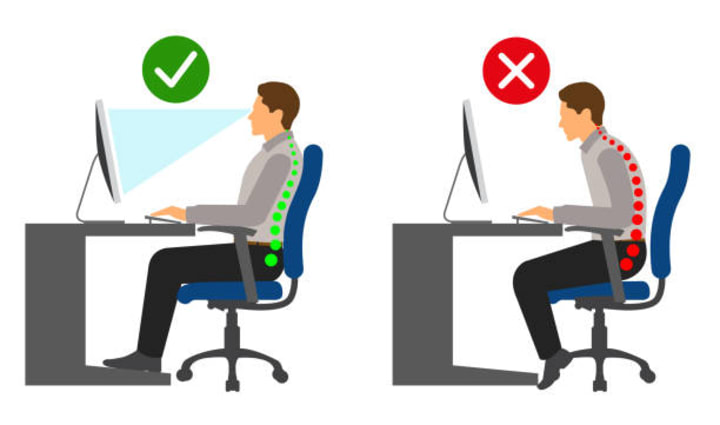
To practice good posture, try these tips:
- Stand up straight and engage your core muscles. Imagine a string attached to the top of your head pulling you up towards the ceiling.
- Keep your shoulders relaxed and avoid hunching forward or rounding your back.
- Keep your feet shoulder-width apart and distribute your weight evenly on both feet.
- When sitting, choose a chair with good lumbar support and adjust it to a comfortable height. Make sure your feet are flat on the ground and your knees are bent at a 90-degree angle.
Remember, it's important to be mindful of your posture throughout the day, not just when you're standing or sitting. If you have a desk job or spend a lot of time sitting, be sure to take regular breaks to stretch and move around to avoid becoming too sedentary.
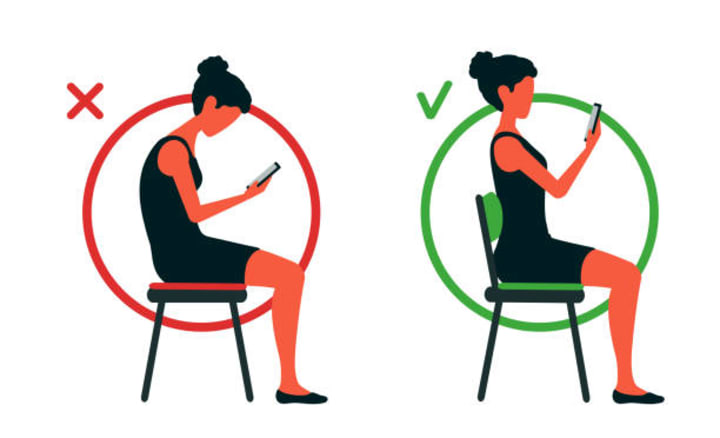
Hot and Cold Therapy:
Hot and cold therapy also known as thermotherapy and cryotherapy, can be effective strategies for managing back pain.
Heat therapy involves the use of heat to relax muscles and improve blood flow, which can help reduce pain and stiffness. Heat therapy can be applied using a heating pad, hot water bottle, or heat wrap, and can be particularly helpful for relieving muscle spasms and tension.
Cold therapy, on the other hand, involves the use of cold to numb pain and reduce inflammation. Cold therapy can be applied using a cold pack, ice pack, or ice massage, and can be particularly helpful for reducing swelling and numbness.
It's important to remember that heat and cold therapy should not be used directly on the skin for extended periods of time, as they can cause tissue damage. Instead, they should be applied through a towel or other barrier to protect the skin.
To use hot and cold therapy effectively:
- Alternate between heat and cold therapy. Apply heat for 20-30 minutes, then ice for 20-30 minutes, and repeat as needed.
- Be mindful of your skin. Avoid applying heat or cold directly to the skin for extended periods of time, and use a towel or other barrier to protect your skin.
- Consult with a healthcare professional. If you have any concerns or are unsure which type of therapy is right for you, speak with a healthcare professional for guidance.
Remember, hot and cold therapy should not be used as a substitute for medical treatment. If your back pain persists or is severe, it's important to speak with a healthcare professional for proper diagnosis and treatment.

Get Enough Sleep:
Getting enough sleep is important for overall health and well-being, and it can also help reduce back pain. During sleep, your body has a chance to rest and repair itself, which can help reduce muscle tension and inflammation.
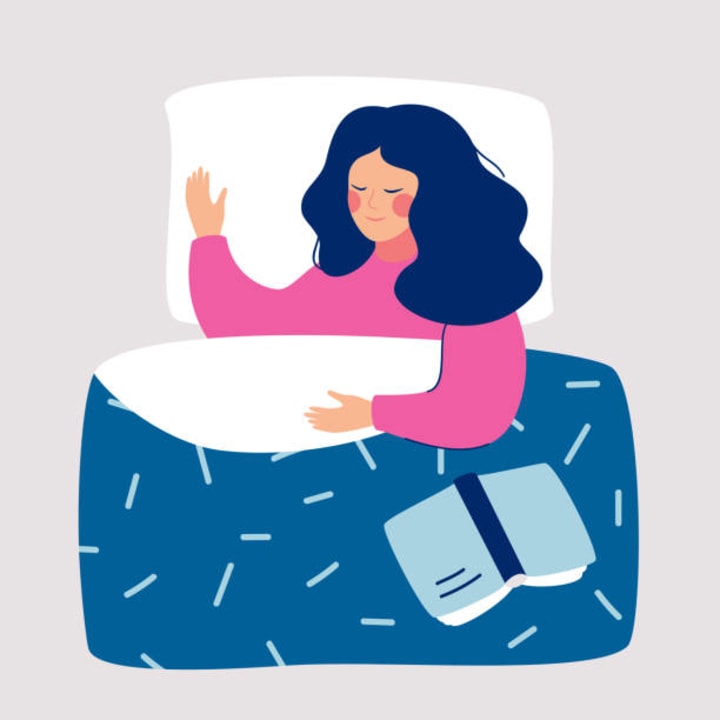
- Aim for 7-9 hours of sleep per night.
- Create a comfortable sleep environment. Make sure your bed is comfortable and that your room is cool, dark, and quiet.
- Establish a consistent sleep routine. Try to go to bed and wake up at the same time every day, even on the weekends.
- Avoid screens before bed. The blue light emitted by screens can interfere with your body's natural sleep cycle, so it's best to avoid screens for at least an hour before bed.
- Relax before bed. Engage in relaxation techniques like deep breathing, meditation, or reading to help you wind down before sleep.
If you're having trouble sleeping or if your back pain is preventing you from getting a good night's rest, it's important to speak with a healthcare professional for guidance. They can help you identify and address any underlying issues that may be contributing to your sleep problems.
Consider Natural Remedies:
There are a number of natural remedies that may help reduce back pain, including herbal remedies like ginger and turmeric, and essential oils like peppermint and eucalyptus applying on back. Note: These remedies may not work for everyone, they may be worth a try if you’re looking for a more natural approach to pain management.
It's important to remember that natural remedies may not work for everyone, and they should not be used as a substitute for medical treatment.
Learn Relaxation Techniques and Stress Management:
Learning relaxation techniques is an effective strategy for dealing with back pain. Stress and tension can often contribute to back pain, and finding ways to relax and reduce stress can help improve overall well-being and reduce pain.

Some relaxation techniques that may be helpful for managing back pain include:
- Deep Breathing: Deep breathing involves taking slow, deep breaths in through the nose and out through the mouth. This can help calm the mind and relax the body.
- Meditation: Meditation involves focusing the mind on a single point of reference, such as the breath or a mantra. This can help calm the mind and reduce stress and anxiety.
- Progressive Muscle Relaxation: Progressive muscle relaxation involves tensing and relaxing each muscle group in the body, starting with the toes and working up to the head. This can help relax the entire body and reduce muscle tension.
- Yoga: Yoga involves a series of physical postures, breath control, and meditation techniques designed to improve flexibility, strength, and relaxation.
- Massage: Massage therapy can be an effective way to reduce back pain by relaxing muscles, improving circulation, and increasing flexibility.
It's important to find a relaxation technique that works for you and to make time for relaxation on a regular basis. If you're having trouble finding relief from back pain, it may be helpful to speak with a healthcare professional or a trained therapist for guidance.
Don’t Give Up:
Dealing with back pain can be challenging, and it’s normal to feel frustrated at times. But it’s important to keep trying different strategies and to stay positive. With the right approach, you can find relief and get back to living your best life.
Dealing with back pain can be challenging, and it's normal to feel frustrated at times. But it's important to remember that there are a number of strategies you can use to find relief and get back to living your best life.
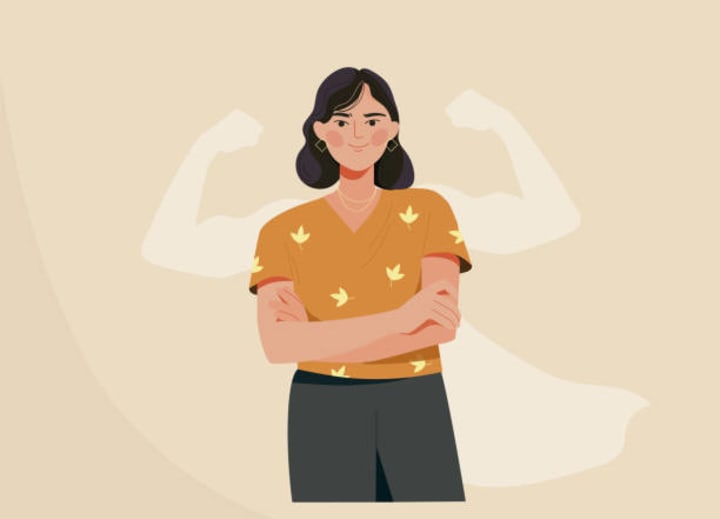
Some things you can do to stay positive and keep moving forward include:
- Keep Trying Different Strategies: If one approach isn't working, don't give up – there are many different techniques you can try to find relief.
- Seek Support: Talk to friends, family, or a healthcare professional about your pain and how it's affecting you. Sometimes just having someone to listen can make a big difference.
- Stay Active: Even if you're in pain, it's important to stay as active as you can. Exercise can help improve flexibility, strength, and overall well-being, which can in turn help reduce pain.
- Focus: Focus on the things you can do, not the things you can't. It's natural to feel frustrated if you can't do certain activities because of your back pain, but try to focus on the things you can do and find enjoyment in them.
- Take Break: Take sufficient breaks and practice self-care. It's important to take breaks and give yourself time to rest and recharge. Engage in relaxation techniques like deep breathing, meditation, or yoga to help reduce stress and manage your pain.
Remember, it's okay to have bad days and to feel frustrated, but don't give up. With the right approach, you can find relief and get back to living your best life. If your back pain persists or is severe, it's important to speak with a healthcare professional for proper diagnosis and treatment.
Physical Therapy:
Physical therapy is a form of treatment that involves the use of exercises, stretches, and other techniques to improve movement, reduce pain, and restore function. Physical therapy can be an effective treatment option for back pain, and it can be used in conjunction with other strategies such as medication and heat/cold therapy.

A physical therapist can design a treatment plan specifically for your needs, which may include:
- Stretching Exercises: Stretching exercises can help improve flexibility and reduce muscle tension.
- Strengthening Exercises: Strengthening exercises can help improve muscle strength and stability, which can in turn help reduce back pain.
- Cardiovascular Exercise: Cardiovascular exercise can help improve endurance and overall health, which can help reduce back pain.
- Manual Therapy: Manual therapy involves techniques like massage, stretching, and joint mobilization performed by the therapist. This can help reduce muscle tension and improve mobility.
- Education: A physical therapist can teach you about proper posture, body mechanics, and other strategies for reducing back pain and preventing future problems.
If you're interested in physical therapy for your back pain, it's important to speak with a healthcare professional for a referral to a trained therapist. Together, you can determine the best course of treatment for your needs.
Surgery:
In some cases, surgery may be necessary to treat back pain. This is typically only recommended for severe or chronic pain that has not responded to other treatment methods. It's important to discuss all of your options with your doctor and carefully consider the potential risks and benefits before making a decision.

Surgery is generally only recommended for back pain if other treatments have not been successful or if there is a specific underlying issue that needs to be addressed.
Some common reasons for back surgery include:
- Herniated Disc: A herniated disc occurs when the soft, gel-like center of a spinal disc bulges out through a tear in the outer layer. This can cause pain, numbness, and weakness in the back and limbs.
- Spinal Stenosis: Spinal stenosis is a narrowing of the spinal canal that can put pressure on the nerves and cause back pain.
- Spondylolisthesis: Spondylolisthesis is a condition in which one of the vertebrae in the spine slips out of place, causing pain and instability.
- Degenerative Disc Disease: Degenerative disc disease is a condition in which the spinal discs break down and cause pain, stiffness, and loss of mobility.
It's important to note that surgery is not always necessary for back pain, and it should only be considered after other treatment options have been explored. If you're considering surgery for your back pain, it's important to speak with a healthcare professional to determine if it is the right option for you.
Conclusion:
In addition to these self-care techniques, it's important to listen to your body and rest when you need to. Avoiding activities that exacerbate your pain and allowing your body time to heal can be an important part of the recovery process.

It's also important to consult with your healthcare provider before starting any new treatment or exercise program. They can provide personalized recommendations and ensure that you're taking the most appropriate course of action for your specific situation.
In conclusion, the art of healing is about finding the right combination of treatments and self-care techniques to ease your back pain and improve your quality of life. By understanding the root cause of your pain, consulting with your healthcare provider, and incorporating self-care techniques into your daily routine, you can take control of your back pain and find relief.
About the Creator
Sreevani
I am a passionate Teacher and an outstanding Professor at the University Level with expertise in Anatomy, Biomechanics, Exercise Therapy, Neurology, Physiology, Physiotherapy in Neurological Conditions, Rehabilitation, Genetics, etc.
Enjoyed the story? Support the Creator.
Subscribe for free to receive all their stories in your feed. You could also pledge your support or give them a one-off tip, letting them know you appreciate their work.






Comments
There are no comments for this story
Be the first to respond and start the conversation.